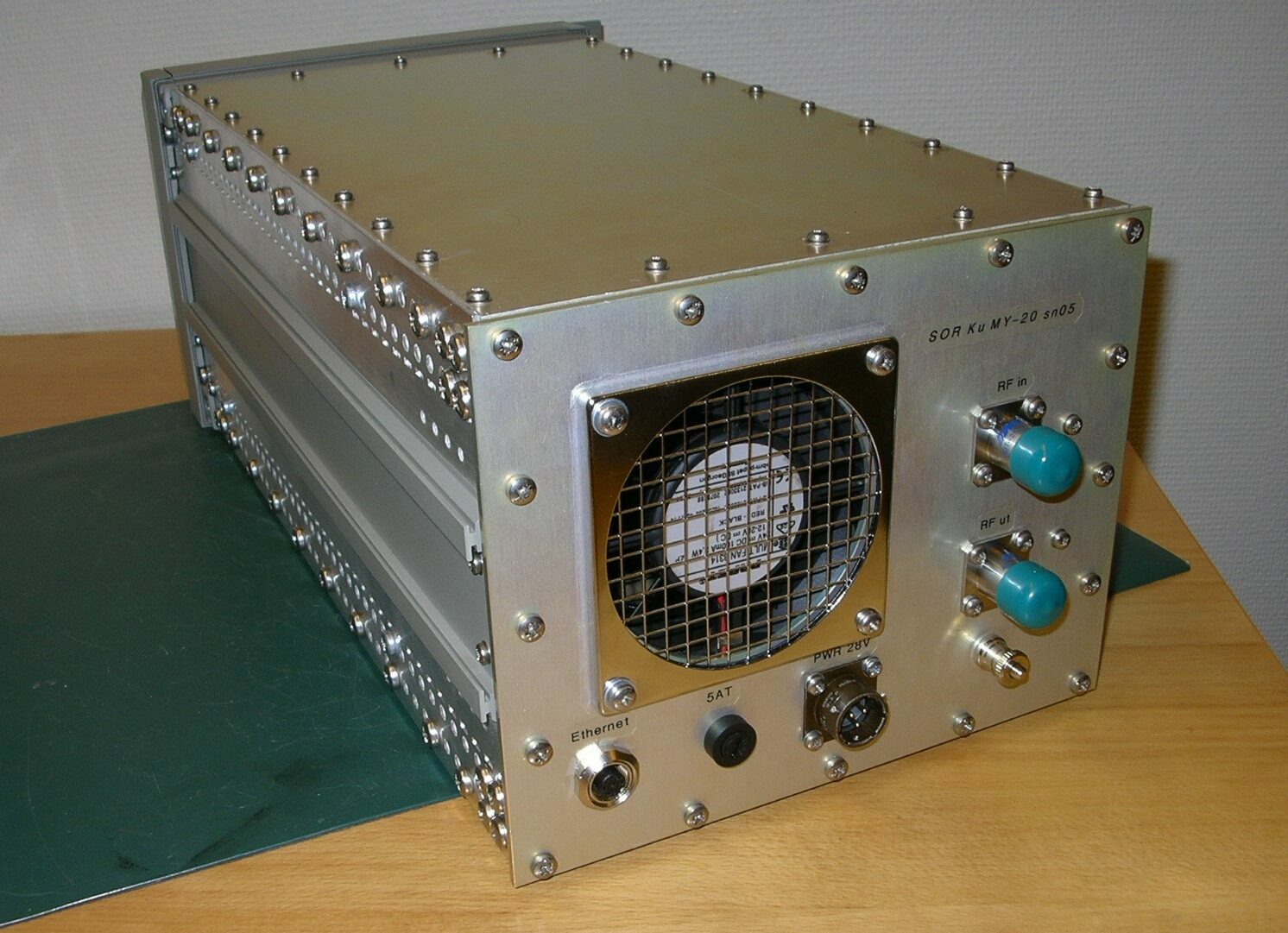The Astor III Technique Generator (TG)
Electronic Attack (EA), Electronic Support (ES)

The development of the Astor III TG started in 2006. Since then 12 units have been delivered to FMV. The DRFM bandwidth of Astor III TG is 750 MHz and the Ku-band unit contains, instead of a DRFM, an optical adjustable delay line (ADL) with the bandwidth >2 GHz. The ADL can generate one false target with arbitrary motions and a phase/frequency modulator ensures doppler modulations and other PM/FM.
The Astor III has been operational since 2008 and have a successful record in jamming various radars. My-konsult now has signed a maintenance agreement for Astor III TG with FMV. The maintentance agreement ensures operation of the Astor III TG during the years 2023 and 2024.
System capabilities:
The Astor III TG contains a receiver and two parallel jamming channels: one DRFM and one SOR. This creates the ability to combine obscuration jamming and deception jamming. The techniques, that are fully user programmable, are (except for Ku-band):
- Barrage noise
- Spot noise
- Spot noise with frequency memory
- Pulsed noise
- RGPO/I, VGPO/I
- Cover pulse with or without accelerating edges
- False targets
- DRFM CW
- Multiple false targets
- Pattern projection (project a picture in the radar)
- TETRIS (special high density false target technique)
- Asynchronous pulse train
In addition, amplitude modulation (AM) can be applied to any technique and phase/frequency modulation can be applied to any DRFM technique. The AM techniques are:
- Constant gain
- Constant gain with delay
- Inverse gain
- Square wave/swept square wave
- Sawtooth/swept sawtooth
- Sine/random sine
The phase/frequency modulations are:
- Frequency sweep
- Random frequency modulation
- Coordinated doppler (coordinated with false target range motion)
- Phase noise and binary phase noise
- Binary phase shift keying
- XRN (special alternating sideband modulation)
Jamming techniques can be scheduled in time to create jamming sequences.
The System contains a PRI tracker that can track fix and dwell & switch, stagger, sliding and jitter PRI. The primary purpose of the tracker is to support the generation of up-range false targets even if the radar uses agile PRI.
All user data (jamming techniques and log files) are stored on a USB key and the system contains no user data after power down.
The System can also perform threat emitter simulation (TES) with a pre-programmed arbitrary waveform. The HMI have an extensive mode editor with animations of the programmed technique. The receiver data are presented in a waterfall display. In addition there is an oscilloscope showing detector signal, frequency signal and transmitted signal and PRI waterfall.
System attributes:
| Frequency coverage (one TG per band): | S-band (E/F), C-band (G), X-band (H/I/J) and Ku-band (J) |
| Output power | +20 dBm ± 3 dB |
| Sensitivity: | Typically better than -65 dBm |
| Minimum delay: | <200 ns |
| Prime power: | 28 VDC |
| Power consumption: | < 110 W |
| RF connector | Type N |